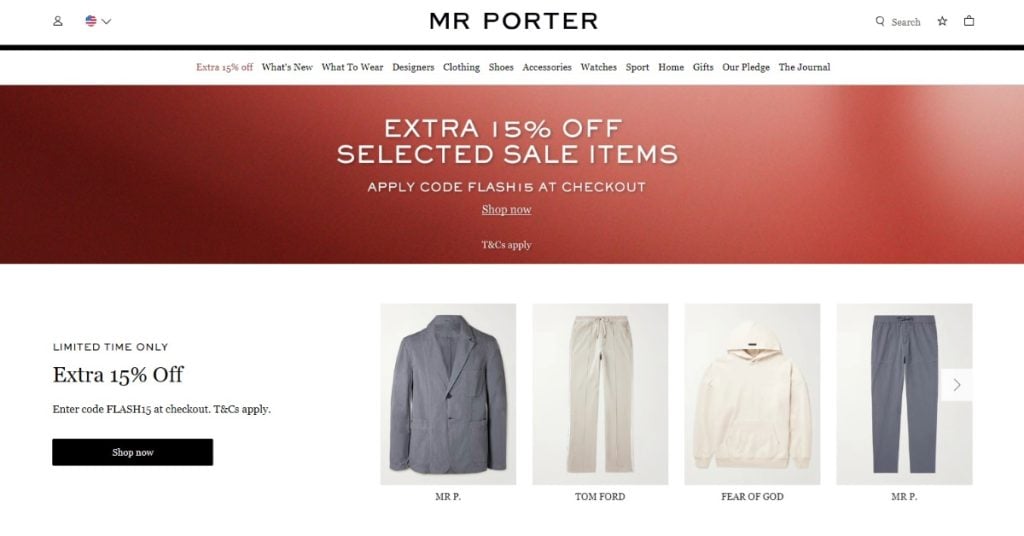
MrPorter marketplace case study: book a demo to start yours
Mr. Porter, an esteemed online retailer for men’s fashion, provides a meticulously curated array of designer attire, accessories, and grooming items. If you’d like to start your own marketplace like MrPorter, you’re facing a buy vs build decision. So before you decide to build it in-house on top of Spree open-source, consider using the feature-rich Enterprise Edition cutting your time-to-market to a few weeks.
Build vs Buy a marketplace?
Open-source usage offers numerous advantages, like complete control and development versatility, but these come with significant financial costs. The process of developing a complete marketplace solution is lengthy and expensive, often requiring months or years. This has been our takeaway from several marketplace projects.
The fastest and safest way to launch your marketplace is with a trusted, enterprise-grade solution like Spree Commerce Enterprise Edition, designed to cut time-to-market and reduce development risks.
Back to the MrPorter marketplace case study
Mr. Porter, a renowned online luxury men’s fashion retailer, was launched in 2011 as a part of the NET-A-PORTER Group and later integrated into Richemont.
It quickly distinguished itself in the e-commerce fashion landscape through its extensive range of high-end fashion brands and exclusive collections. This approach attracted a discerning customer base and set the platform apart as a leading destination for luxury men’s fashion.
The platform’s success is also attributed to its user-friendly interface, intuitive design, and exceptional customer service. This focus on a seamless shopping experience garnered a loyal and satisfied customer base.
Additionally, Mr. Porter’s innovative marketing strategies, including high-quality editorial content and collaborations with fashion influencers, significantly enhanced its market presence.
Internationally, Mr. Porter expanded its reach to over 170 countries, broadening its customer base and fueling revenue growth. By 2019, it reported annual sales of over £200 million. In 2022, MrPorter.com’s online revenue amounted to $520.1 million, with a conversion rate of 1.00-1.50% and an average order value between $575-600, surpassing industry medians and showcasing its robust position in the luxury fashion industry.
Mr. Porter’s affiliate program is another strategic facet of its business model, further expanding its market reach and brand influence. Through this program, partners and content creators can earn commissions by promoting Mr. Porter’s extensive range of luxury fashion products.
This initiative not only broadens Mr. Porter’s customer base but also strengthens its relationships with fashion influencers and bloggers, creating a mutually beneficial ecosystem that supports both the brand’s growth and the success of its affiliates.
How to emulate MrPorter’s marketplace success?
Aiming for MrPorter-like success, consider starting your marketplace soon, ideally within weeks, not months. Explore how your product range fits with what your customers need and keep tweaking your customer acquisition techniques based on real findings.
It’s smart to test the market before fully investing in its creation.
Here’s how to get started:
- Book a marketplace demo call: We’ll help you evaluate Spree for your marketplace needs and get started with the Enterprise Edition
- Customize your Storefront: Use the drag & drop page builder or custom CSS
- Onboard Brands: Invite your brands or choose brands from our catalog
- Select Products: Curate products and collections manually or automate it
- Embed products: Make your content, newsletters, social media shoppable
- Get Paid: Get paid as soon as products are shipped by the brands
- End-to-end automation: brands sync, fulfillment, payouts, invoicing, taxes
When you’ve tried all that and it works, start thinking about building your own, custom-made marketplace project based on Spree Commerce. First, by decoupling the storefront and going headless with marketplace API, and later with your own backend, if you decide you really need it. Just lift and shift the storefront.
Nobody has to know what’s under the hood, right?



